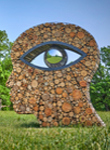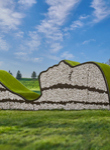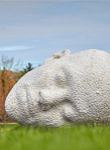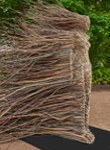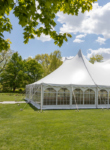Bellwort is a delicate spring perennial with twisted, bell-shaped, nodding flowers. This is a welcome addition to a native garden, shade garden, cottage garden, woodland garden, naturalized woodland, or container. This species is native to the Chicago region according to Swink and Wilhelm’s Plants of the Chicago Region and current research.
Size and method of spreading:
Bellwort is 1 ½ to 2 feet tall and 1 to 1 ½ feet wide at maturity. It spreads by producing offsets from underground stem structures (rhizomes).
Native geographic location and habitat: (include C-value if appropriate)
The native range of bellwort includes the Eastern and Central United States. C Value: 7.
Attracts birds or pollinators:
Bellwort attracts various bee species for pollination, and ants help distribute the seeds.
Leaf description:
Bellwort leaves are 6 inches long and 2 inches wide, but they have a tendency to roll toward the undersides along the edges. The bases of the alternately arranged leaves surround the stems completely (perfoliate leaves). The veins on the leaves are parallel to the edges. The leaf structures around the base of the plant (basal leaves) have been reduced to bladeless sheaths that wrap around the stems.
Flower description:
Bellwort flowers are bell shaped and occur individually at the terminal ends of the branched stems. The flowers are nodding with narrow, yellow petallike structures (tepals) that are spirally twisted. In between the tepals are six pollen-bearing structures (stamen) surrounding a light yellow-green ovary (pistil) with a tri-parted tip (style).
Fruit description:
Bellwort produces small, dry fruit (capsules) with three obtuse lobes. The capsules split into three sections when they are mature enough to release the seeds.
Plant Care:
Unlike other spring wildflowers, bellwort will retain its foliage throughout the summer.
List of pests, diseases, and tolerances:
Bellwort is not prone to have issues with diseases, but deer can devastate bellwort populations. Young plants have minor issues with slugs.



